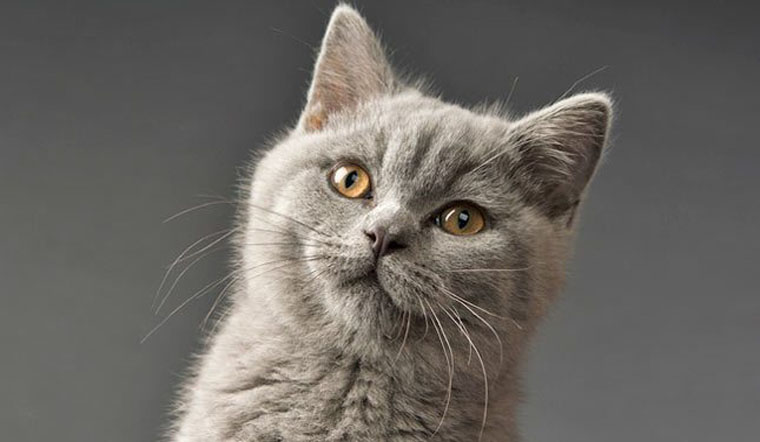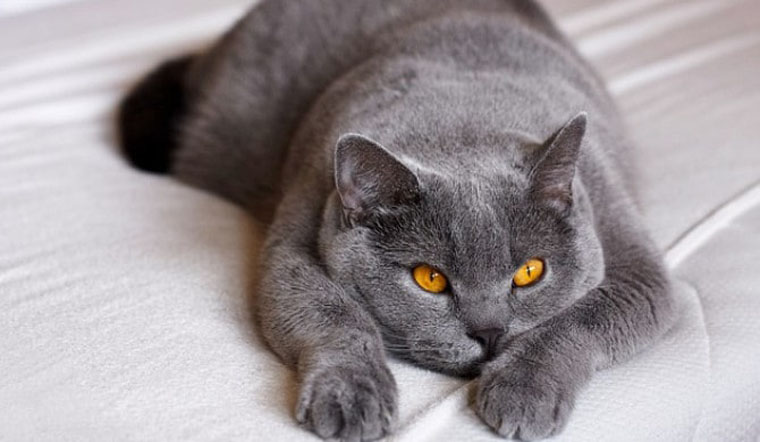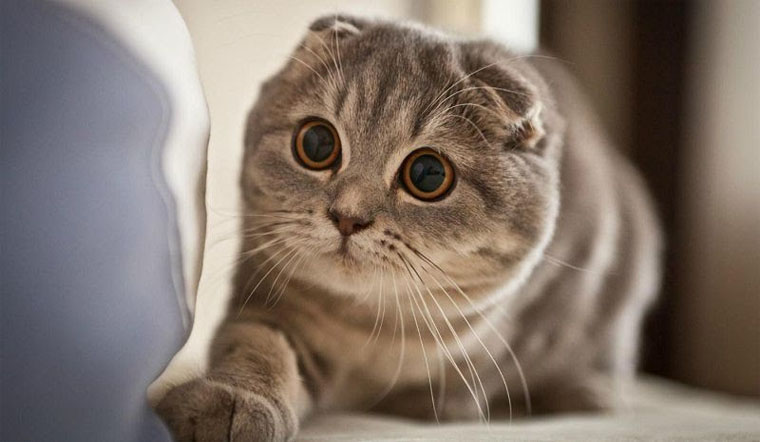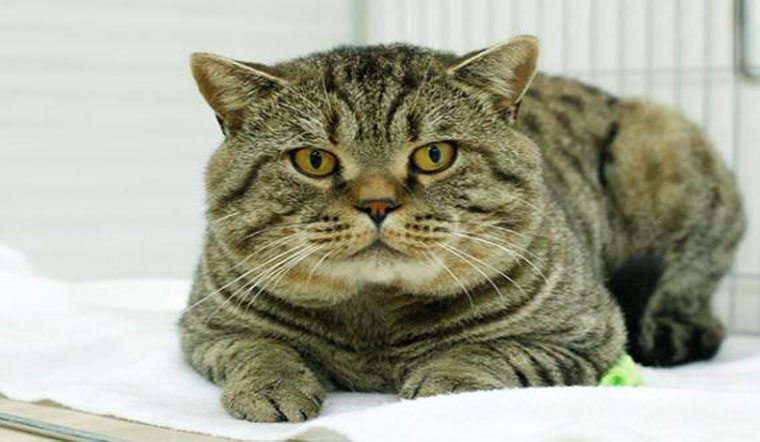The British Shorthair cat is an adorable and easy-to-care-for breed with a wide range of colors. Here’s everything you need to know about their characteristics, origins, and how to care for these regal felines from across the pond.
1. All About British Shorthair Cats
Origin of British Shorthair Cats

British Shorthair cats are one of the oldest breeds in the world, with their origins tracing back to ancient Egypt during the Roman Empire. They became popular in Britain during the Roman invasion of the island and have since become synonymous with the beautiful United Kingdom.
This association is due to the fact that, after being brought to Britain, they adapted to the local environment and thrived, becoming a favorite among noble families.
Physical Characteristics of British Shorthair Cats
British Shorthair cats have thick, short, and incredibly soft fur. Their bodies are round, sturdy, and well-proportioned, with short legs and thick paw pads that give them a graceful gait.
Their heads are large and round, with broad cheeks, a small mouth, pointed triangular ears, and big round eyes.
Personality Traits of British Shorthair Cats
British Shorthair cats are generally passive, lazy, and not prone to vigorous movement. They are very friendly but prefer to be close to their owners rather than being held.
If left alone, they will quietly wait for their owners to return. A simple ball can keep them entertained for hours.
Types of British Shorthair Cats
There are several types of British Shorthair cats, but they can be broadly categorized into two groups: purebred and crossbred. While they may look similar, their coat colors can help distinguish them from each other.
Purebred British Shorthair Cats

This type of British Shorthair has a short nose and round cheeks, giving them a cute, cartoonish appearance. They resemble the Chartreux or Russian Blue breeds. The most common eye color in this breed is golden yellow. Their coat is thick, soft, evenly distributed, and slightly elastic.
Crossbred British Shorthair Cats

The most notable difference between crossbred and purebred British Shorthairs is their coat. While purebreds have thick, soft fur, crossbreds tend to have thinner and less uniform coats.
One of the most popular crossbred British Shorthair cats is the Scottish Fold Shorthair Cat, a mix between the Scottish Fold and purebred British Shorthair.
Popular Colors of British Shorthair Cats
White British Shorthair Cats
To get the most beautiful white British Shorthair crossbreed, try mixing British Shorthair with Persian cats!

Tabby British Shorthair Cats
The unique coloring of this breed is the result of a mix between the British Shorthair and the .

Bicolor British Shorthair Cats
This breed is known for its two colors, with the Tuxedo variety being the most famous.

Hyacinth British Shorthair Cats
This breed is a cross between British Shorthair and , but they tend to exhibit more Siamese traits than British Shorthair.

Reasons to Own a British Shorthair Cat
This breed is friendly, affectionate, and loves to cuddle with their owners.
Additionally, British Shorthair cats are great with children, so you can rest assured that they will get along well with kids in the household.
2. How to Care for a British Shorthair Cat
British Shorthair cats are not only cute in appearance and personality but also have a relatively long lifespan. On average, a well-cared-for cat can live up to 12 years. However, they do shed a lot during the shedding season, so be sure to brush their coat regularly during spring and autumn.
Food and Diet

This breed is relatively easy to feed. They can eat anything from packaged pet food and seeds to human food. However, to ensure your furry friend gets all the necessary nutrients, be sure to include protein, vitamins, and fiber in their diet, such as meat, , or .
Some wet foods that British Shorthair cats particularly enjoy are pate and cheese, but these should be given in moderation to avoid overnutrition.
Health and Grooming Care
When it comes to pet health care, there are three basic things to keep in mind:
-
Make sure your pet is up to date with their vaccinations.
-
Schedule regular health checkups.
-
Provide a comfortable living environment.
Pay special attention to sensitive areas like their ears, eyes, nose, and mouth, cleaning them weekly to prevent health issues.
Although British Shorthair cats have short hair, their coats are thick and prone to shedding. Therefore, it’s essential to brush their fur once or twice a day to remove dead hair and promote healthy hair growth.
Additionally, when brushing their coat, check for fleas, ticks, or skin inflammation, and treat them promptly. You can also use coconut or olive oil while brushing to add shine and relax your cat.
As for bathing, aim for twice or thrice a month, and always dry and blow-dry their fur afterward to prevent itching and skin inflammation.
 Brushing your cat’s fur
Brushing your cat’s fur
Training Your British Shorthair Cat
Teaching Your Cat to Shake Hands
Place your cat’s favorite treat in your hand and call them over to smell the treat. When they reach for it, raise your hand slightly so they have to lift their paw, then say, “Shake hands,” and gently take their paw in your hand.
Afterward, give them the treat as a reward. This training process may take a month or two, so be patient and consistent.
Teaching Your Cat Not to Bite
This training is simple: if your cat bites your hand, gently tap their head to signal that they should let go. Be careful not to tap too hard, or they might get upset with you.
 Teaching your cat not to bite
Teaching your cat not to bite
Teaching Your Cat to Recognize Their Name
When your cat is in an excited state, whether from playing, being petted, or cuddled, call them by their name. This will help them associate their name with a positive state of mind.
It’s important to use their name during moments of excitement rather than when you’re scolding them, as they might associate their name with something negative.
Breeding British Shorthair Cats
Here are eight of the most common British Shorthair cat crossbreeds:
-
Tabby British Shorthair: Purebred British Shorthair crossed with a Mướp cat.
-
Bicolor British Shorthair: Purebred British Shorthair crossed with a different breed that has a bicolor coat.
-
Lilac British Shorthair: Purebred British Shorthair crossed with a different breed with a lilac coat.
-
Hyacinth British Shorthair: Purebred British Shorthair crossed with a Siamese cat
-
Silver British Shorthair: Purebred British Shorthair crossed with a Siamese cat
-
Golden British Shorthair: Purebred British Shorthair crossed with a Persian cat or other red-coated breeds
-
Gray-Blue British Shorthair: Purebred British Shorthair crossed with a gray-blue British Shorthair.
-
White British Shorthair: Purebred white British Shorthair crossed with a purebred white or other white-coated breeds
 Rules for breeding British Shorthair cats
Rules for breeding British Shorthair cats
Rules for Breeding British Shorthair Cats:
-
If you want to breed British Shorthair mixes, make sure you have the knowledge to ensure the health of the cats.
-
Only breed British Shorthairs with compatible breeds, and don’t breed based on personal preferences, as it can negatively impact the offspring.
-
When choosing a breed to cross with, research which cats are easy to breed, which are difficult, and which should not be bred.
Notes on Choosing a Breeding Location for British Shorthair Cats:
-
Choose a reputable breeding facility and thoroughly inspect the conditions and quality of the facility.
-
Thoroughly check the background, origin, health, and physical condition of the parent cats.
Common Health Issues in British Shorthair Cats
-
Diabetes
This is the most common health issue in British Shorthair cats and is often caused by endocrine disorders or overnutrition.
-
Gingivitis
Signs of this condition include swollen gums, bad breath, and red gums. It’s typically seen in kittens and can resolve on its own, but if it persists, consult a veterinarian.
-
Rabies
Rabies is a dangerous and infectious disease that can cause white foam and continuous drooling in cats.
 Common health issues in British Shorthair cats
Common health issues in British Shorthair cats
-
Feline Panleukopenia (Feline Distemper)
Cats with this condition experience a decrease in blood cells, leading to a weakened immune system.
-
Feline Immunodeficiency Virus (FIV)
Is Cat Hair Loss Normal? Understanding and Treating Your Cat’s Hair Loss
“Pet owners often worry when they see their beloved feline friends shedding hair. It’s a common concern, and many wonder about the cause. So, today, we will shed some light on this very topic and explain why cats shed their fur! Stay tuned as we unravel the mystery behind your cat’s shedding habits.”
The Bengal Cat: Unveiling the Unique Traits, Care Guide, and Pricing of the Bengal Cat
The Bengal cat is undoubtedly one of the most stunning and expensive cat breeds in the world today. With their exotic looks and captivating presence, these felines have captivated cat enthusiasts and breeders alike. But what exactly is a Bengal cat? Join us as we explore the origins, unique characteristics, and specific care requirements of this extraordinary breed.
Care and Pricing’>The Scottish Fold: A Comprehensive Guide to its Origins, Characteristics, Care and Pricing
The Scottish Fold, or simply the ‘Fold’, is an adorable breed of cat with a unique biological trait; its ears fold forward and downward, giving it a distinctive and charming appearance. This breed originated in Scotland and has since captured the hearts of cat lovers worldwide. With their sweet faces and affectionate nature, it’s no wonder that people are eager to learn more about their history, care, and availability. This introduction aims to provide a glimpse into the world of the Scottish Fold, offering insight into their origins, the specific care they require, and the process of welcoming one of these captivating cats into your home.



































